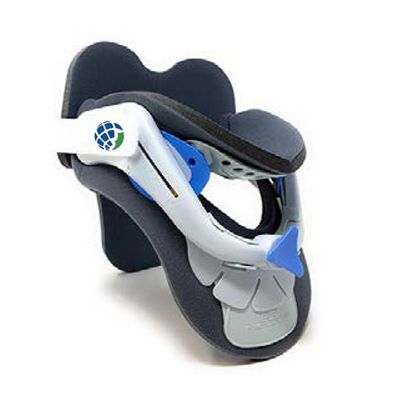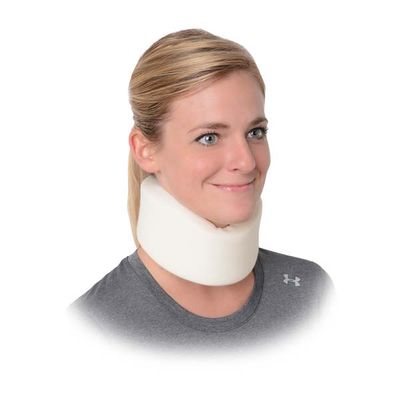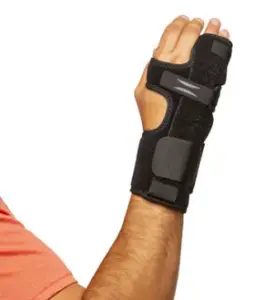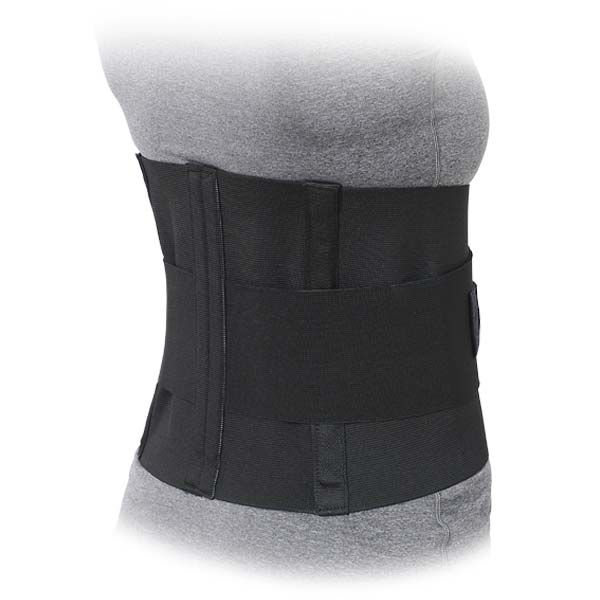Ankle Braces
Introduction
Ankle braces are crucial for supporting and stabilizing the ankle joint, especially for individuals recovering from injuries or participating in physical activities. Designed to prevent further damage and facilitate healing, ankle braces offer the necessary support to maintain mobility while protecting the joint. This article will explore the different types of ankle braces, their benefits, and how to choose the best one based on your needs.
Types of Ankle Braces
Ankle braces come in various forms, each tailored to specific conditions and levels of support. Below are the most common types:
Rigid Ankle Braces
- These braces offer maximum support and immobilization, typically used after severe ankle sprains, fractures, or post-surgery recovery.
- Made from sturdy materials like plastic, they limit movement and provide stability, helping prevent further injury.
- Often prescribed by healthcare professionals, rigid ankle braces are crucial for proper alignment and healing.
Semi-Rigid Ankle Braces
- Semi-rigid braces offer moderate support and allow for some range of motion while stabilizing the ankle.
- These braces are suitable for mild to moderate ankle injuries, such as sprains or tendonitis.
- Often featuring adjustable straps, semi-rigid braces provide a snug fit, making them ideal for athletes who need support during sports activities without complete immobilization.
Compression Sleeves
- Compression sleeves provide mild support and are primarily used for minor ankle pain, swelling, or inflammation.
- Made from elastic, breathable materials like neoprene, they offer compression and warmth, promoting circulation and reducing swelling.
- Ideal for individuals who need light support during daily activities or recovery from mild injuries.
Lace-Up Ankle Braces
- Lace-up braces are adjustable and provide a balance of support and flexibility.
- They feature laces and straps, allowing for a customizable fit that can be adjusted based on the level of support needed.
- Often used by athletes to prevent injuries or support mild to moderate sprains, these braces offer stability while allowing some mobility.
Ankle Stabilizers
- Designed to support the ankle during physical activities, these braces feature figure-eight or stirrup straps to provide additional stability and compression.
- They help control excessive ankle movement, reducing the risk of rolling or twisting the ankle.
- Ankle stabilizers are suitable for those who participate in high-impact sports like basketball, soccer, or running.
Benefits of Ankle Braces
Ankle braces provide numerous benefits, especially for those with ankle injuries or those engaging in activities that put stress on the ankle joint:
- Injury Prevention: Wearing an ankle brace during physical activities can help prevent sprains, strains, and other injuries by stabilizing the ankle and limiting excessive motion.
- Pain Relief: Braces provide support and compression, reducing pain and inflammation associated with conditions like arthritis or tendonitis.
- Post-Injury Recovery: Ankle braces help immobilize the joint after injury, allowing for proper healing and reducing the risk of re-injury.
- Improved Mobility: By stabilizing the ankle, braces enable individuals to walk, run, or engage in other activities with greater confidence and stability.
- Support During Sports: Athletes use ankle braces to enhance performance and minimize the risk of injury, especially in high-impact sports.
How to Choose the Right Ankle Brace
Selecting the right ankle brace is essential for ensuring the best results. Here are some key factors to consider:
Purpose and Condition
- Assess your needs: Are you recovering from an injury, managing chronic pain, or looking for a preventive measure during sports?
- Consult with a healthcare professional to determine the most suitable brace for your condition.
Level of Support
- Determine the level of support needed based on your condition. For severe injuries, a rigid brace may be necessary, while mild conditions may only require a compression sleeve.
- For athletes, semi-rigid or lace-up braces often provide the balance of stability and flexibility needed for performance.
Material and Comfort
- Ankle braces come in various materials such as neoprene, which provides warmth and compression, and plastic for maximum support.
- Choose breathable, lightweight materials if the brace is to be worn for extended periods, ensuring comfort and minimizing skin irritation.
Adjustability and Fit
- A proper fit is crucial for the brace’s effectiveness. Many ankle braces feature adjustable straps, laces, or stirrups that allow you to customize the fit.
- Make sure the brace isn’t too tight, as this could restrict circulation, or too loose, as it may not provide adequate support.
Activity Level
- If you’re an athlete, consider braces designed for sports activities that offer protection without restricting movement.
- For everyday use or post-injury recovery, a more supportive brace may be appropriate.
Proper Use and Maintenance of Ankle Braces
Using an ankle brace correctly and maintaining it properly is crucial for its effectiveness:
Follow Medical Guidance
- Always adhere to the instructions provided by your doctor or physical therapist regarding how long and when to wear the brace.
- If used for injury recovery, you may need to wear the brace continuously at first and gradually reduce its use as healing progresses.
Cleaning and Maintenance
- Regularly clean your ankle brace, especially if worn daily. Most braces can be hand-washed with mild soap and water and air-dried.
- Avoid using harsh detergents or hot water, as these may damage the brace’s materials.
Inspect for Wear and Tear
- Check the brace regularly for signs of wear, such as frayed straps or damaged hinges. Replacing worn parts or the entire brace when needed ensures optimal support.
- Ensure that adjustable straps or laces are functioning correctly to maintain a proper fit.
Conclusion
Ankle braces are valuable tools for managing and preventing ankle injuries, providing support, and enhancing mobility. Whether you’re recovering from an injury, managing a chronic condition, or participating in sports, understanding the different types of ankle braces and choosing the right one for your needs is essential. Always consult with a healthcare professional to ensure the best outcome for your ankle health, and follow proper care guidelines to maximize the brace’s effectiveness
Lumbar Sacral = Back Support W/ Side Pulls
A back support with side pulls is a type of orthopedic brace designed to provide stability, compression, and support to the lower back, particularly in cases of lower back pain, injury, or strain. The addition of side pulls allows for adjustable compression and increased support, helping to alleviate pain and promote proper posture.
Key Features of a Back Support with Side Pulls
Adjustable Side Pulls
- Side pulls are adjustable straps or laces that allow users to tighten or loosen the brace as needed. This feature provides customizable compression and support to the lower back, enhancing comfort and effectiveness.
- The side pulls allow for easy adjustments throughout the day, accommodating changes in comfort level or activity.
Lumbar Support
- The brace is designed to target the lumbar region (lower back), providing support to the spine and surrounding muscles. This can help reduce stress on the back and prevent further injury.
Compression
- The compression provided by the brace helps reduce swelling and inflammation, which can lead to pain relief. Compression also promotes better posture and can improve muscle engagement in the lower back.
Breathable Material
- Many back supports with side pulls are made from breathable, moisture-wicking materials to ensure comfort during extended use. This helps reduce heat buildup and prevents skin irritation.
Ergonomic Design
- Designed to fit the natural curves of the back, the support is contoured to provide a snug and comfortable fit. The side pulls enable adjustments to fit a variety of body shapes and sizes.
Velcro or Hook-and-Loop Fastening
- The brace is usually secured with Velcro or hook-and-loop fasteners, allowing users to easily adjust the tightness for optimal support.
Uses of a Back Support with Side Pulls
Lower Back Pain Relief
- Ideal for people suffering from lower back pain due to muscle strain, overuse, or conditions like sciatica or herniated discs. The side pulls provide extra support to stabilize the lower back and alleviate pain.
Posture Improvement
- Helps correct poor posture by providing lumbar support and encouraging a more upright position. This can be particularly helpful for individuals who spend long hours sitting or standing in improper positions.
Injury Prevention
- Used by athletes, manual laborers, or individuals who perform heavy lifting to prevent lower back injuries. The brace adds extra stability to the spine and reduces the risk of strain or injury.
Post-Surgical Support
- Provides stability and reduces strain on the lower back following surgery or injury, promoting a faster recovery and preventing reinjury.
Chronic Back Conditions
- Beneficial for individuals with chronic back conditions such as degenerative disc disease, osteoarthritis, or lumbar stenosis. The adjustable side pulls allow for consistent support based on the level of discomfort.
Benefits of Back Support with Side Pulls
- Customizable Compression: The adjustable side pulls enable the user to tighten or loosen the brace, providing the right amount of compression based on activity level or pain.
- Improved Stability: By stabilizing the lower back and promoting proper posture, the brace helps reduce strain on the spine and surrounding muscles.
- Pain Relief: Compression and support can alleviate pain caused by injury, muscle strain, or chronic back conditions.
- Enhanced Mobility: Many users find that the brace allows them to continue daily activities with less pain, while still supporting their back.
How to Use a Back Support with Side Pulls
- Position the Brace: Center the back support over your lower back (lumbar region), ensuring it is sitting comfortably.
- Fasten the Brace: Secure the front closure (typically Velcro) around your abdomen. The brace should fit snugly but not too tight to restrict breathing or movement.
- Adjust Side Pulls: Tighten or loosen the side pulls as needed to customize the level of compression and support. Make sure the brace feels secure and provides adequate support without causing discomfort.
- Wear During Activity: Use the back support during activities that may strain your lower back, such as lifting, bending, or prolonged sitting/standing. You can also wear it during exercise if advised by a healthcare provider.
- Do Not Overuse: While a back support can be helpful for pain relief and injury prevention, it’s important not to become overly reliant on the brace. Overuse can lead to weakened back muscles. Gradually work on strengthening your back through physical therapy or exercises.
Care and Maintenance
- Follow the manufacturer’s instructions for cleaning and maintaining the back support. Most are hand-washable or machine-washable in a gentle cycle.
- Ensure that the brace is fully dry before wearing it again to prevent skin irritation or damage to the materials.
A back support with side pulls can be an effective tool for managing back pain, supporting posture, and preventing injury. It’s ideal for those with lower back issues who need adjustable support for varying levels of activity and comfort.
ORDER NUMBER: 501-W, 503-W, 505-W, 507-W, 507-W, 508-W, 509-W, 510-W, 511-W, 512-W
501-B, 503-B, 505-B, 507-B, 508-B, 509-B, 510-B, 511-B, 512-B
SIZE: X-Small thru 5X Large (see sizing chart to the left)
PRODUCT HIGHLIGHTS:
• Form-fitting 10" all-elastic with double pull side panels for additional support
• High quality Velcro™ closure for durability
• Four flexible stays in back panel for excellent support
INDICATIONS:
Ideal for providing support and compression for strains and sprains of the lower back.
SUGGESTED HCPC: L0625
Categories: Cervical, Spine & Abdominal



Knuckle Orthosis: Purpose, Benefits, and Applications
Knuckle Orthosis Knuckle Orthosis: Purpose, Benefits, and Applications A Knuckle Orthosis is a specialized medical device designed to provide stability, support, and protection to the metacarpophalangeal (MCP) joints—the knuckles of the hand. These orthotic devices are commonly used in the… Continue Reading…

Wrist and Hand Braces: Support, Relief, and Rehabilitation for Hand and Wrist Conditions
Wrist and Hand Braces Introduction Wrist and hand braces are essential tools for individuals managing pain, recovering from injuries, or dealing with chronic conditions such as carpal tunnel syndrome, arthritis, or tendonitis. These braces provide stability, compression, and support to… Continue Reading…

Orthopedic Shoulder Braces: Support for Shoulder Injuries and Chronic Conditions
Orthopedic Shoulder Braces Introduction Orthopedic shoulder braces are designed to provide support and stabilization for individuals recovering from shoulder injuries, managing chronic shoulder pain, or undergoing post-surgical rehabilitation. These braces help alleviate discomfort, protect the shoulder joint, and prevent further… Continue Reading…


